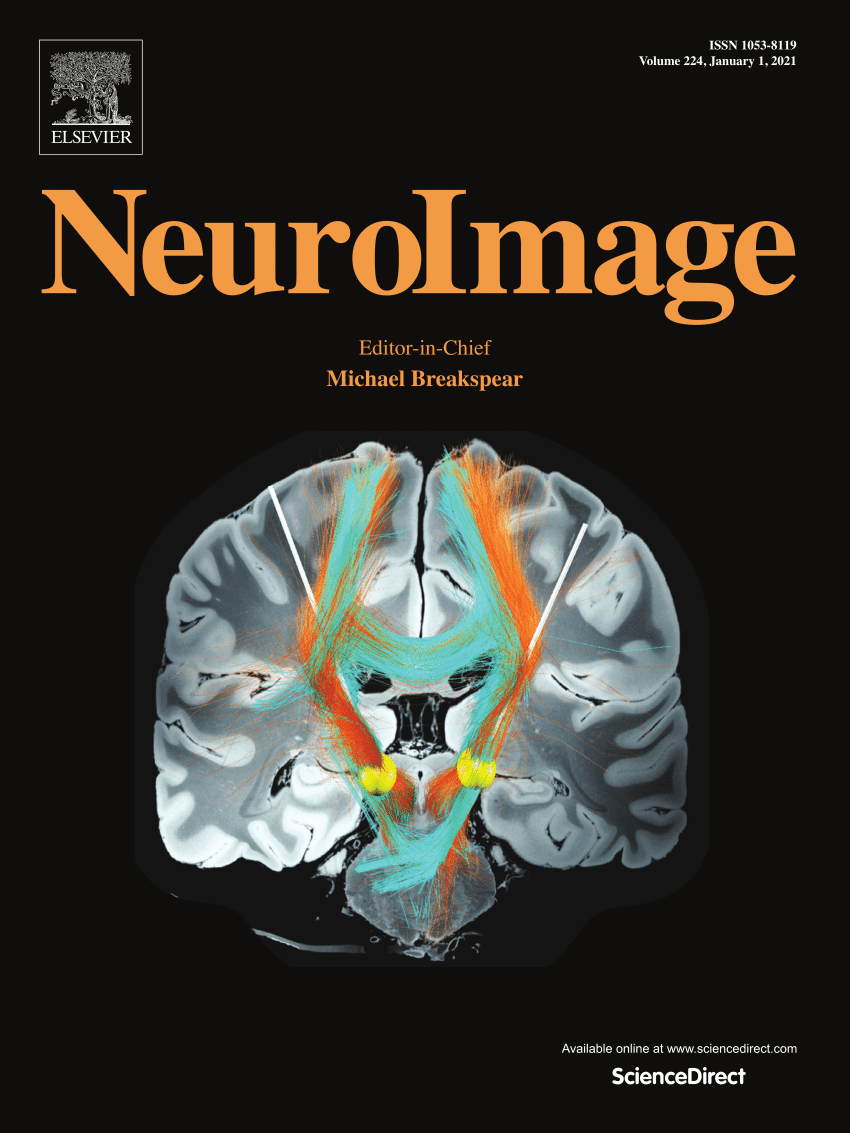Interbrain synchrony attenuation during a peer cooperative task in young children with autistic traits –an EEG hyperscanning study
IF 4.7
2区 医学
Q1 NEUROIMAGING
引用次数: 0
Abstract
Young children with autism spectrum disorder (ASD) traits frequently encounter difficulties in peer interaction. Assessing peer interaction performance is crucial but challenging within the clinical diagnostic paradigm of ASD. Hyperscanning, which simultaneously monitors brain activity in multiple individuals, has become a popular tool for assessing social interaction's neural features. The present study aims to investigate the brain-to-brain connectivity between child-dyads engaged in a game-like collaborative peer interaction task via the hyperscanning electroencephalogram (EEG) approach. The final sample comprised 66 young children: 18 child dyads with typical development (TD), TD-TD, and 15 with ASD traits matched to TD, TD-ASD. The study indicated a depressed level of connectivity in the dyad group with ASD as the responder, with a notable decrease observed in the beta oscillation over the right parietal to left temporal coupling between subjects. A pattern that differed from that observed in the TD-TD group was identified with regard to full-band connectivity over the right-to-right temporal region. It was observed that the TD-TD group exhibited enhanced connectivity following the completion of the task, which was not the case for the TD-ASD group. Significant correlations were observed between scores on the ASD symptom rating scale and the selected significant interbrain connectivity index. The application of a hyperscanning EEG paradigm demonstrated that the participating children with autistic traits exhibited an attenuated and apparently distinct alteration pattern of interbrain connectivity in comparison to a control group. These findings highlight the value of physiologically based measures in informing etiological and interventional studies in neuropsychiatry.
自闭症儿童同伴合作任务中的脑间同步衰减——脑电图超扫描研究
患有自闭症谱系障碍(ASD)特征的幼儿在同伴交往中经常遇到困难。评估同伴互动表现是至关重要的,但在ASD的临床诊断范式中具有挑战性。超扫描可以同时监测多个个体的大脑活动,已经成为一种评估社会互动神经特征的流行工具。本研究旨在通过超扫描脑电图(EEG)方法研究参与游戏类协作同伴互动任务的儿童对大脑的连接。最后的样本包括66名幼儿:18名具有典型发育(TD)、TD-TD的儿童,15名具有与TD、TD-ASD相匹配的ASD特征的儿童。该研究表明,在以ASD为应答者的双组中,连通性水平较低,受试者之间右顶叶到左颞叶耦合的β振荡显著减少。与TD-TD组观察到的模式不同,在右至右颞区的全频段连通性方面被确定。我们观察到,TD-TD组在完成任务后表现出增强的连通性,而TD-ASD组却没有这种情况。ASD症状评定量表得分与所选显著脑间连通性指数之间存在显著相关性。超扫描脑电图模式的应用表明,与对照组相比,自闭症儿童的脑间连通性表现出减弱和明显的改变模式。这些发现强调了基于生理学的测量在神经精神病学病因学和介入研究中的价值。
本文章由计算机程序翻译,如有差异,请以英文原文为准。
求助全文
约1分钟内获得全文
求助全文
来源期刊

NeuroImage
医学-核医学
CiteScore
11.30
自引率
10.50%
发文量
809
审稿时长
63 days
期刊介绍:
NeuroImage, a Journal of Brain Function provides a vehicle for communicating important advances in acquiring, analyzing, and modelling neuroimaging data and in applying these techniques to the study of structure-function and brain-behavior relationships. Though the emphasis is on the macroscopic level of human brain organization, meso-and microscopic neuroimaging across all species will be considered if informative for understanding the aforementioned relationships.
 求助内容:
求助内容: 应助结果提醒方式:
应助结果提醒方式:


